Expert’s Note: This knife mastery guide builds upon our Essential BBQ Tools Encyclopedia. The right knife isn’t just a tool—it’s an extension of your skill. Master these four blades, and you’ll transform meat preparation from a chore into a craft.
Essential Knives for Meat Prep: The Only 4 Blades You Actually Need
“A great knife doesn’t just cut meat—it respects it. The difference between tearing through flesh and gliding through muscle fibers is the difference between amateur butchery and culinary artistry. These four knives are your orchestra: each has a specific role, but together they create symphonies of perfectly prepared meat.”
Essential Knives for Meat Prep: The Only 4 Blades You Actually Need
Download our Knife Selection & Care Guide - Maintenance schedule and sharpening techniques
In a world of 15-piece knife sets and specialty blades for every imaginable task, the truth about meat preparation is beautifully simple: you only need four knives to handle 99% of all meat prep tasks. This guide cuts through the marketing hype to show you which knives genuinely matter, how to choose them, and how to maintain them for a lifetime of perfect cuts.
🎯 THE MEAT PREP MINDSET: LESS IS MORE
Why four well-chosen knives outperform twenty mediocre ones every time.
⚙️ The Philosophy of Strategic Simplicity
Quality Over Quantity Always Wins
- Mastery Over Variety: Becoming exceptional with four knives is better than being mediocre with twenty. Each knife should feel like an extension of your hand.
- Sharpness is Everything: A cheap knife that’s razor-sharp outperforms an expensive knife that’s dull. Your sharpening routine matters more than your budget.
- The Right Tool Mentality: Each of these four knives serves a distinct purpose. Using the wrong knife for a task damages both the meat and the blade.
- Investment Strategy: Spending $400 on four exceptional knives yields better results than $400 on a 20-piece set of mediocre blades.
🎯 Knife Selection Reality Check
❌ Common Knife Mistakes
- Buying giant knife sets
- Using serrated knives for meat
- Neglecting sharpening
- Wrong knife for the task
- Poor storage damaging edges
✅ Smart Knife Strategy
- 4 quality knives + sharpener
- Straight edges for clean cuts
- Regular maintenance routine
- Right tool for each job
- Proper storage protection
⚔️ THE ESSENTIAL QUARTET: YOUR MEAT PREP ARSENAL
These four knives handle everything from breaking down primals to paper-thin slicing.
🔪 1. The Chef’s Knife (8-inch) – Your Workhorse
The Knife That Does Everything
- Primary Tasks: 90% of your cutting work – chopping vegetables for rubs, portioning large cuts, general prep work
- Ideal Size: 8-inch blade – long enough for efficiency, short enough for control
- Best Blade Shape: Curved belly for rock-chopping motion, pointed tip for detailed work
- Steel Type: High-carbon stainless steel for edge retention and corrosion resistance
- Handle Preference: Full tang (metal extends through handle) for balance and durability
🔪 2. The Boning Knife (6-inch Flexible) – Your Precision Tool
The Art of Butchery
- Primary Tasks: Removing silver skin, deboning chicken and poultry, trimming fat caps, precise work around bones
- Ideal Size: 5-6 inch flexible blade – follows contours of bones and meat
- Flexibility: Flexible blade navigates around bones and joints without damaging meat
- Blade Shape: Narrow, pointed tip for getting into tight spaces
- Critical For: Brisket trimming, rib preparation, breaking down whole animals
🔪 3. The Slicing Knife (12-inch Granton Edge) – Your Presentation Master
The Final Touch of Excellence
- Primary Tasks: Paper-thin brisket slices, clean pork shoulder pulls, slicing roasts and large cuts
- Ideal Size: 10-12 inch blade – long enough for single-stroke slicing
- Granton Edge: Oval indentations along blade prevent sticking and create air pockets
- Blade Flexibility: Some flex for following meat contours, but less than boning knife
- Critical For: Competition presentations, family gatherings, any sliced meat service
🔪 4. The Paring Knife (3.5-inch) – Your Detail Artist
The Small But Mighty Performer
- Primary Tasks: Small trimming jobs, removing small bits of silver skin, coring fruits for sauces, detail work
- Ideal Size: 3-4 inch blade – maximum control for small tasks
- Blade Shape: Short, stiff blade for precise control and leverage
- Unexpected Uses: Testing meat tenderness, making small incisions for stuffing
- Why It Matters: Prevents using your expensive chef’s knife for small, damaging tasks
📊 THE KNIFE INVESTMENT MATRIX
Smart spending at every budget level.
🎯 Budget-Based Knife Recommendations
| Budget Level | Chef’s Knife | Boning Knife | Slicing Knife | Paring Knife |
|---|---|---|---|---|
| Starter ($150-200) | Victorinox Fibrox 8″ | Victorinox Flexible Boning | Dexter Russell Slicer | Victorinox Paring |
| Enthusiast ($300-500) | Wüsthof Classic 8″ | Wüsthof Flexible Boning | Mercer Culinary Granton | Wüsthof Paring |
| Professional ($600+) | Shun Classic Chef’s | Global Flexible Boning | MAC Professional Slicer | Shun Paring |
🛠️ KNIFE MAINTENANCE: SHARPNESS IS SAFETY
A sharp knife is safer and performs better than a dull one.
🧼 The Care Routine That Matters
Keeping Your Blades Battle-Ready
- Honing: Use a honing steel before every use to realign the edge. 5-10 strokes per side maintains sharpness between sharpenings.
- Sharpening: Use a whetstone every 2-3 months (or when honing no longer restores edge). Learn proper angle (15-20° for Western knives).
- Cleaning: Hand wash and dry immediately after use. Never put quality knives in dishwasher – heat and chemicals destroy edges.
- Storage: Use a knife block, magnetic strip, or blade guards. Never toss loosely in drawers where edges can chip.
- Cutting Surface: Always use wood or plastic cutting boards. Glass, stone, or metal surfaces destroy knife edges instantly.
🎯 KNIFE SELECTION BY TASK MATRIX
🎯 Which Knife When – The Ultimate Guide
| Task | Primary Knife | Alternative | Technique Tip |
|---|---|---|---|
| Brisket Trimming | Boning Knife | Chef’s Knife | Use tip for precise fat removal |
| Slicing Brisket | Slicing Knife | Chef’s Knife | Long, single-stroke slices |
| Chicken Breakdown | Boning Knife | Paring Knife | Follow bone contours |
| Vegetable Prep | Chef’s Knife | Paring Knife | Rock-chopping motion |
| Fat Cap Trimming | Boning Knife | Chef’s Knife | Shallow angle, steady pressure |
| Silver Skin Removal | Boning Knife | Paring Knife | Get under membrane, lift and pull |
🚨 KNIFE TROUBLESHOOTING & SOLUTIONS
🎯 Common Knife Problems & Fixes
| Problem | Symptoms | Immediate Fix | Long-Term Solution |
|---|---|---|---|
| Dull Blade | Crushing instead of slicing, requires pressure | Honing steel 10 strokes per side | Professional sharpening or whetstone |
| Rolled Edge | Uneven cutting, catches on paper test | Honing at correct angle (15-20°) | Learn proper sharpening technique |
| Rust Spots | Orange/brown discoloration | Baking soda paste scrub | Always dry immediately, stainless steel |
| Loose Handle | Wobble, separation from tang | Epoxy repair if accessible | Replace knife, ensure full tang |
| Chips in Blade | Visible nicks in cutting edge | Professional sharpening to remove | Avoid bones, hard surfaces |
🏁 THE PATH TO KNIFE MASTERY
Mastering these four essential knives transforms meat preparation from a necessary chore into a meditative art form. When your knife becomes an extension of your intention, you stop fighting your tools and start flowing with your craft. The perfect slice, the clean trim, the precise cut—these become not just techniques, but expressions of your growing expertise.
Remember that the journey to knife mastery is gradual. Start with one knife—likely the chef’s knife—and become truly excellent with it. Understand its balance, its sweet spot, its personality. Then gradually add the others, learning when and why to reach for each. Your skills will grow with your collection.
Your mission: Conduct a knife audit. Take inventory of what you own. If you have a giant set with unused knives, consider donating the extras and investing in one quality knife from the essential quartet. Then commit to a maintenance schedule—honing before each use, sharpening quarterly. This single habit will improve your cooking experience more than any new gadget.
Sharp knives are safe knives. Mastered knives are joyful knives. Go find your joy.
Continue Your Tools Education: Build the ultimate BBQ toolkit with these guides:

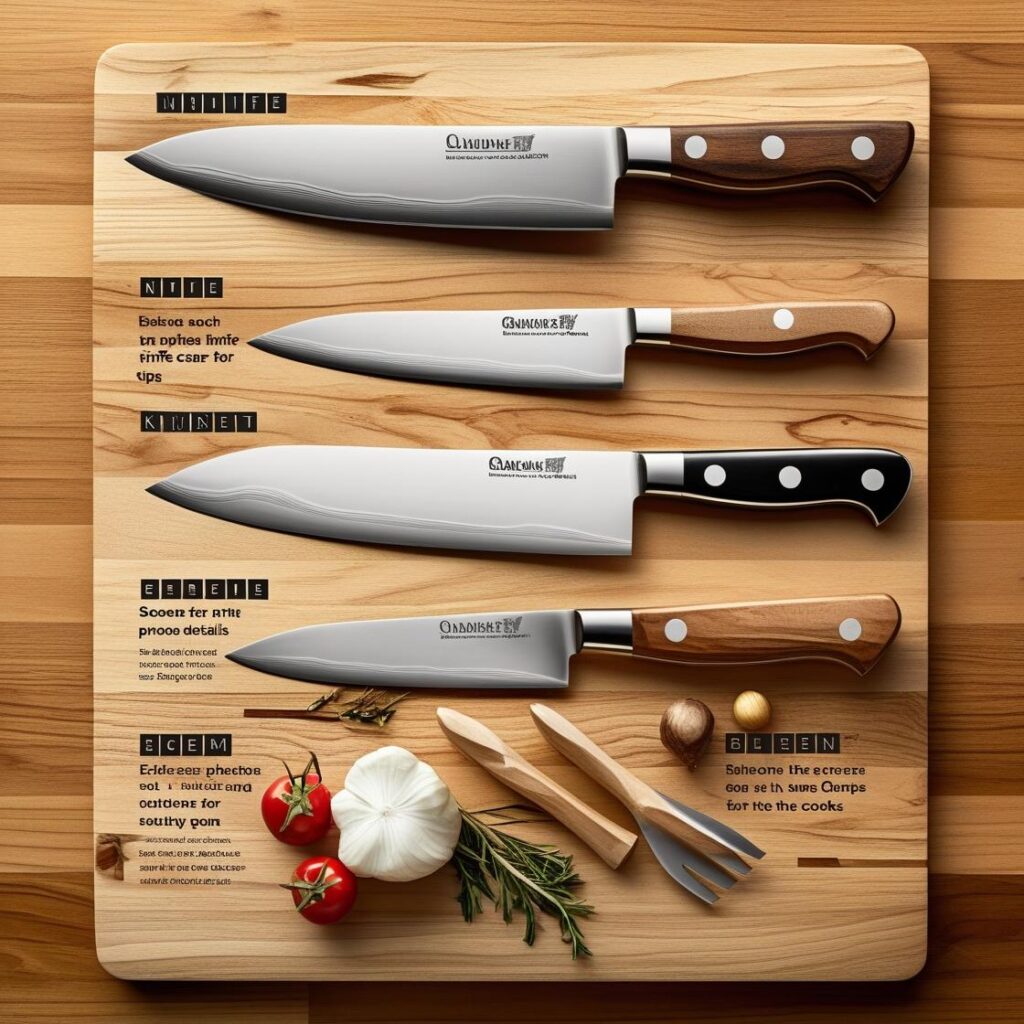

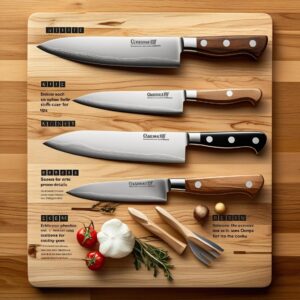
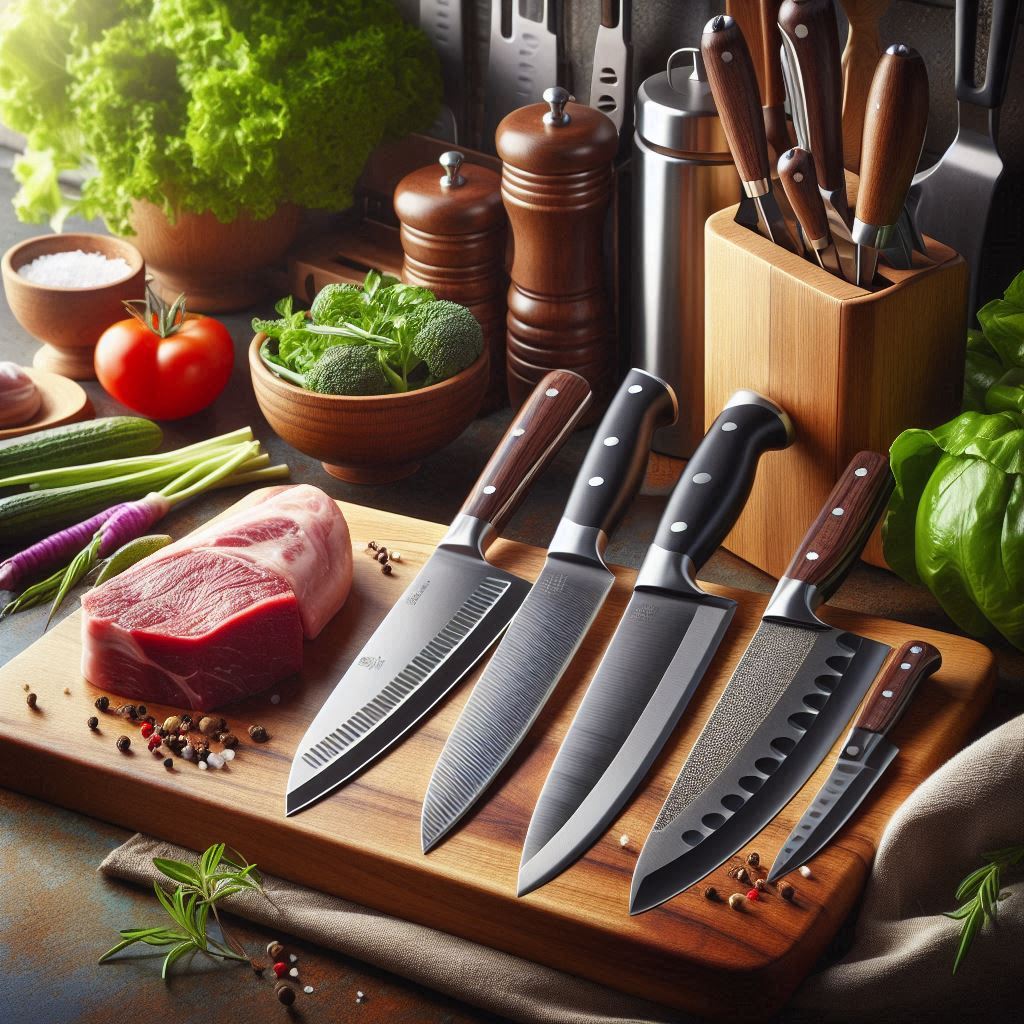
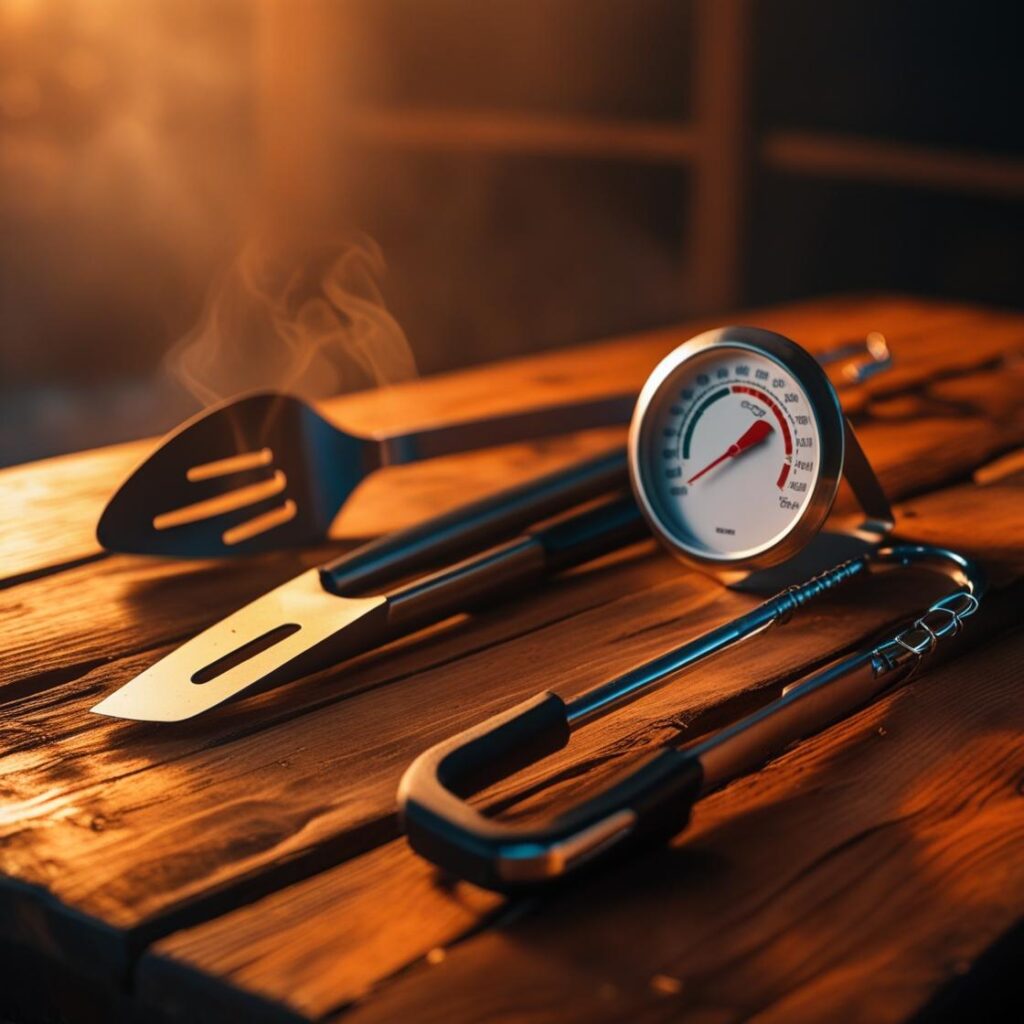
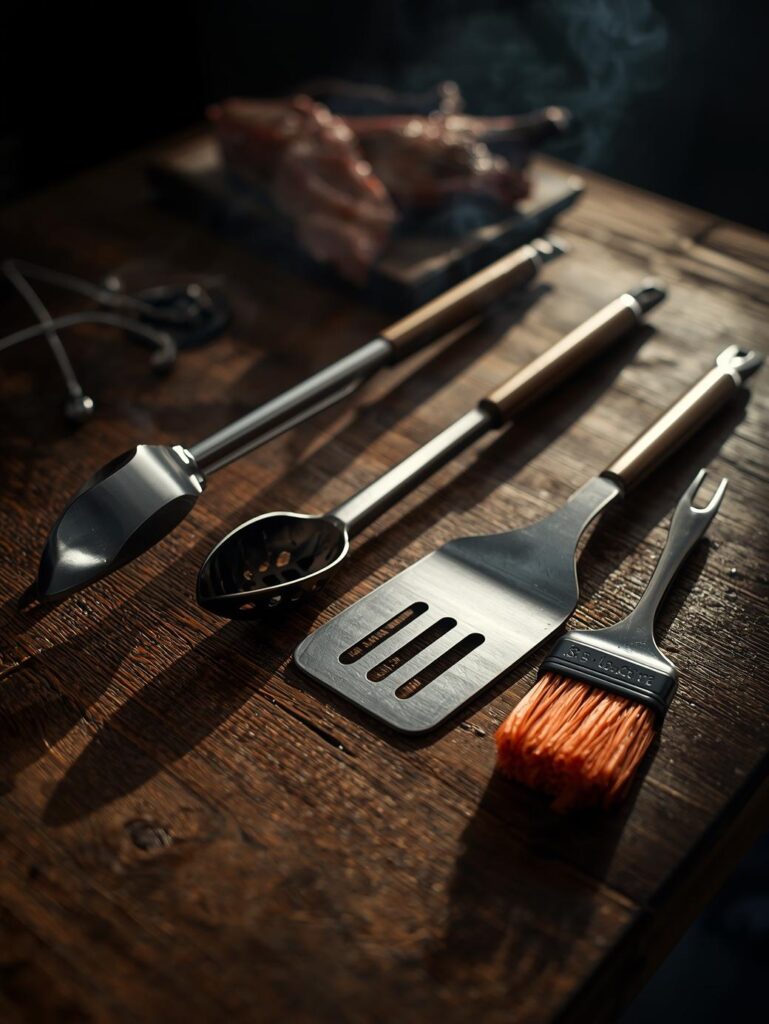
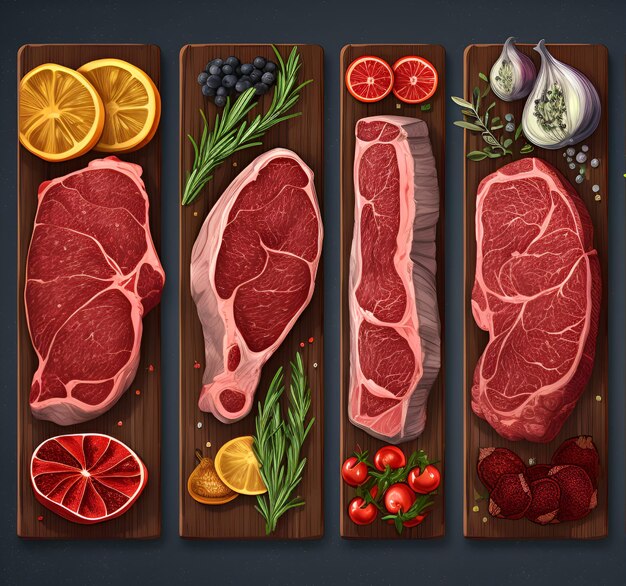
Pingback: Butchery Safety Guide: Essential Protocols for Safe Meat Processing at Every Level
Pingback: Knife Sharpening Techniques: The Complete Guide to Razor-Sharp Blades Every Time
Pingback: Cutting Board Care: The Complete Guide to Maintenance, Sanitization, and Longevity
Pingback: Venison Butchering: How to Process Your Own Deer - Complete Guide 2025